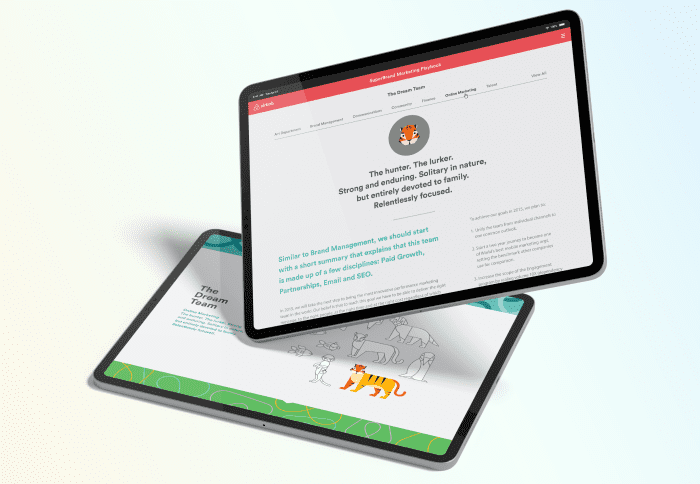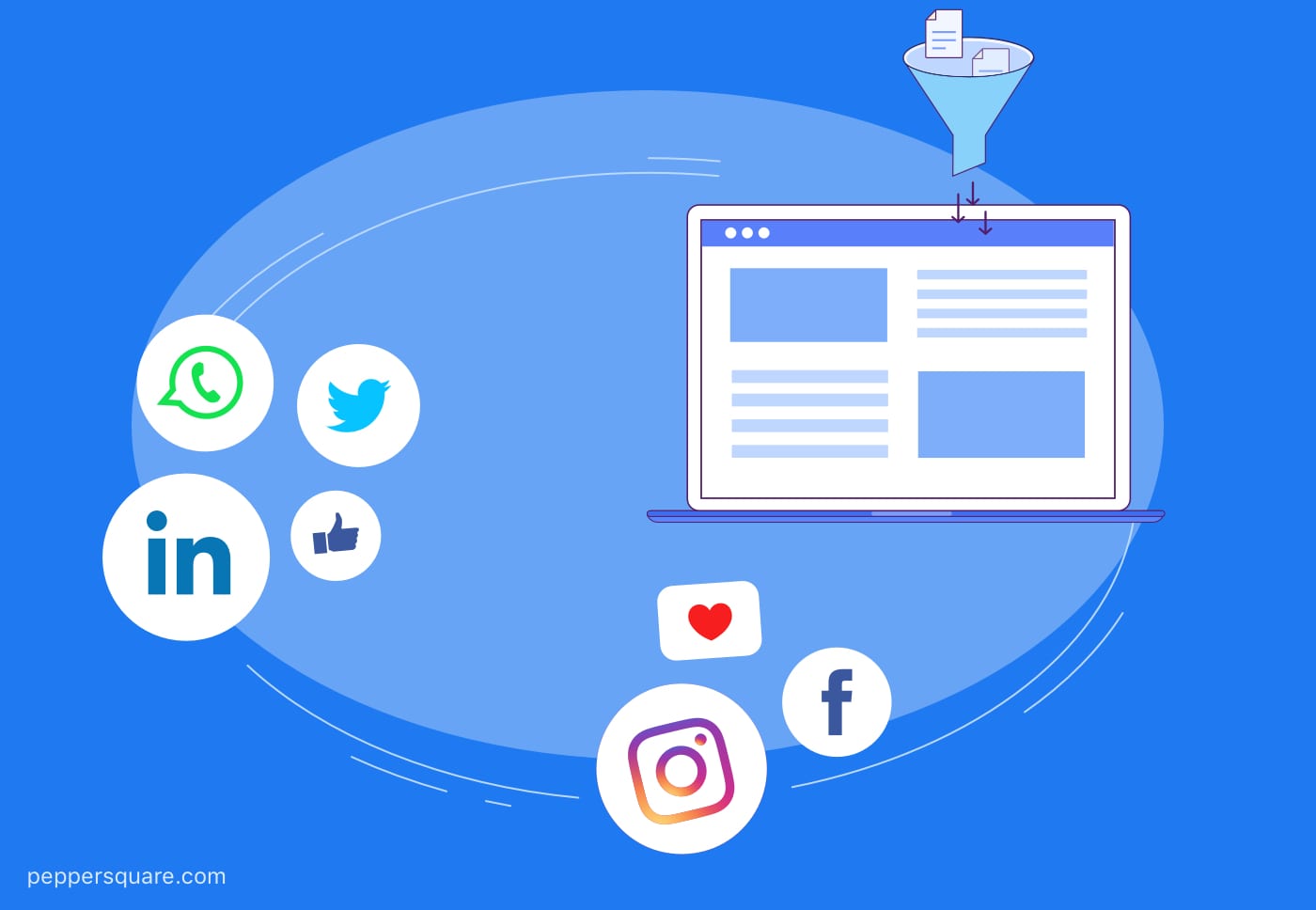
Mobile app market research is one of the essential steps in app development. The importance of research cements its outcome and sets the tone for the success of your mobile app – especially on how well you group different facts and figures for the next development phase.
It is a crucial piece of the puzzle where each finding and data point from the research will shape the app’s way forward. In this blog, we dive deep into the world of app development and explore what it takes to create apps that your customer would love. You can also uncover the latest trends in app design here.
So whether you’re a tech enthusiast, an app developer, or simply someone curious about the world of mobile apps, sit back, relax, and get ready to be inspired!
Understanding mobile app market research
Research is all about the process of gathering and analyzing information. To make informed decisions for the app, the developers must understand the target audience, competition, market trends, marketing, and overall strategy.
These steps validate your app idea and inform you about the ups and downs you will encounter. Regarding benefits, mobile app research can also help you save time and money since expansive steps can be removed.
For example, through audience demographic research, Wonderbly realized it was better off attracting a younger audience, which its competitors failed to do. And since they had this information, Wonderbly created user personas and formulated future campaigns strategically.
The different aspects of mobile app market research
Every step in mobile app market research aids the latter stages, including mobile UI/UX. The best way to understand how these impact the following program is by exploring the different aspects of mobile app market research.
Primary research
- Utilizing digital forums and various other sources to examine the market demand for your project.
- Conducting financial analysis and formulating an advertising strategy to promote the plan.
- Defining the advertising strategy and looking into post-launch activities and tasks.
Secondary research
- Finding ways to improve the core plan and conducting a SWOT analysis.
- Learning more about the target market and exploring their social media preferences and interests.
- Analyzing various marketing strategies that work well for social media.
Critical steps in market research for mobile apps
Defining and understanding your target group
Narrowing in on who your target group is is one of the critical initial steps that will drive the market research process forward. It signals a section of the audience that you need to look at with the factual information that their interests are similar to what your product offers.
Defining their age, gender, location, income, and education or finding out more about their pain points, needs, and preferences will determine the success of your app.
Top UI UX design companies initiate the process by creating user personas. These fictional representations of the target audience give a clear-cut idea for the developers to develop an app based on the needs and preferences of their target audience.
But how do you identify your target group?
Examining industry trends
Trends are some of the common aspects of every market. They signal a common interest among the customer base. So to identify your target group, you need to start by researching market trends.
Conducting user interviews and understanding what attracted people to these trends will help you learn what works for the market. For example, if you were to shoot a commercial video, you must first understand whom you are producing it for.
And to do that, you need to learn about the latest trends in video marketing, conduct user interviews, or, to simplify it all, hire an agency that offers video production services.
Creating user personas
Through interviews, you will understand specific details about people, and by narrowing such information down, you can frame a common group. However, this group has yet to be your target group.
By seeing what they share in common, you need to form a user persona. And with that information, you can further shorten the result and move closer to forming a target group. User personas are commonly made for research purposes, and the outcome will aid the project.
With user personas, you can also make specific changes to the app based on what piques the interest of your target group.
Understand whom you should not sell to
You are also bound to find people close to your target demographic through user personas and target group mapping. However, with further research, you can understand that they are different from your target.
So understanding who you shouldn’t be selling to is another step in clocking down your target group.
Understanding your competitors
Every idea, plan, or concept could have a competitor because we live in a highly competitive world. Similarly, your mobile app could have competitors, and it is essential that you learn about them.
A competitor analysis typically involves
- Evaluating products and services
- Product pricing
- Market share
- Customer reviews
- Strengths and weaknesses
- Marketing strategies
Upon completing these steps, you will understand where you are in the competition and get a fair idea of how the market will react to your app. In addition, judging your competitors’ weaknesses will highlight areas you can explore and improve.
For more clarity, you can also conduct a UX Audit of your competitor to understand how it has helped them reach their goals.
SWOT analysis
SWOT analysis is a form of self-evaluation. It helps you understand your app idea or concept and briefly describes the fundamental changes you must make. Following the above mentioned steps, you will also have data that can be clubbed together for SWOT analysis.
Beginning with strengths and moving towards weaknesses, opportunities, and threats, a complete SWOT analysis shares credible insights on aspects you need to focus on. Here’s an example of a SWOT analysis for a food delivery app.
Formulating a business plan
Formulating a business plan is easily one of the most important yet hardest steps. Your business plan must be flexible, adaptable, and inclusive of all the information you have gathered.
While you cannot guarantee the plan will be profitable, you can make it as realistic as possible with the expectation of going above break-even.
What should a business plan for a mobile app include?
Why is mobile app research necessary?
Improves standards of quality
You might have a specific idea of the type of user experience that your app can offer. But with research, you will learn how to improve your app’s user experience. This is what research can offer. It can raise the standard of your app and single-handedly help you think big.
With research, you can explore top applications downloaded by millions and also understand the most attractive component of these applications. Then, as a result, you can incorporate specific features and look to improve the quality standard.
Helps you understand the needs of end-users
Meeting the needs and requirements of end-users is as important as forming a business plan for your app. It is what the market demands, and your app needs to be able to provide it. And the only way to explore the market demands is by researching the market.
Only through mobile app market research can you truly understand your
- Target group
- Likes and interests of your target group
- Understand why people use your competitor’s app &
- Explore the needs of users that haven’t been met
Evaluates financial decisions
Research brings facts and figures to the table, and with further examination, you can verify these numbers and bring them to the drawing board. The next step is to evaluate the financial decisions and understand whether your budget is enough to get things started.
Cost differences can also help you understand whether you want a mobile app or a mobile website based on what suits your business. It is an important step along the process as it guides the rest of the stages that are yet to appear.
Analyzes ways to market your app
Digital marketing is the need of the hour. People need to know your product, understand its offers and eventually download the app. But how do you get the point across? When it comes to marketing your app, there are some methods that you can follow.
- Social media – enhancing user engagement via social media helps your app become click-worthy.
- Pitch your app to tech blogs – create the perfect pitch and explain why blogs must cover your app.
- Seek app reviews – with several app review sites in store, it is only a matter of time before you find the ideal one.
- Talk to users – considering user retention to be the primary goal; it’s time for you to start engaging with users and receiving feedback.
Closing thoughts
The importance of research only gains significance as time passes. By investing time and effort into mobile app market research, developers can create an app that caters to the exact needs of the target audience, provides a unique user experience, and ultimately achieves success in the app marketplace. In this evolving market, only research can help you determine the road ahead and how your app will fare against roadblocks.
In this journey, the need to have assistance is also essential as you get to see the finish line clearer. Hence, reach out to us as we help you reach new levels of progress.








